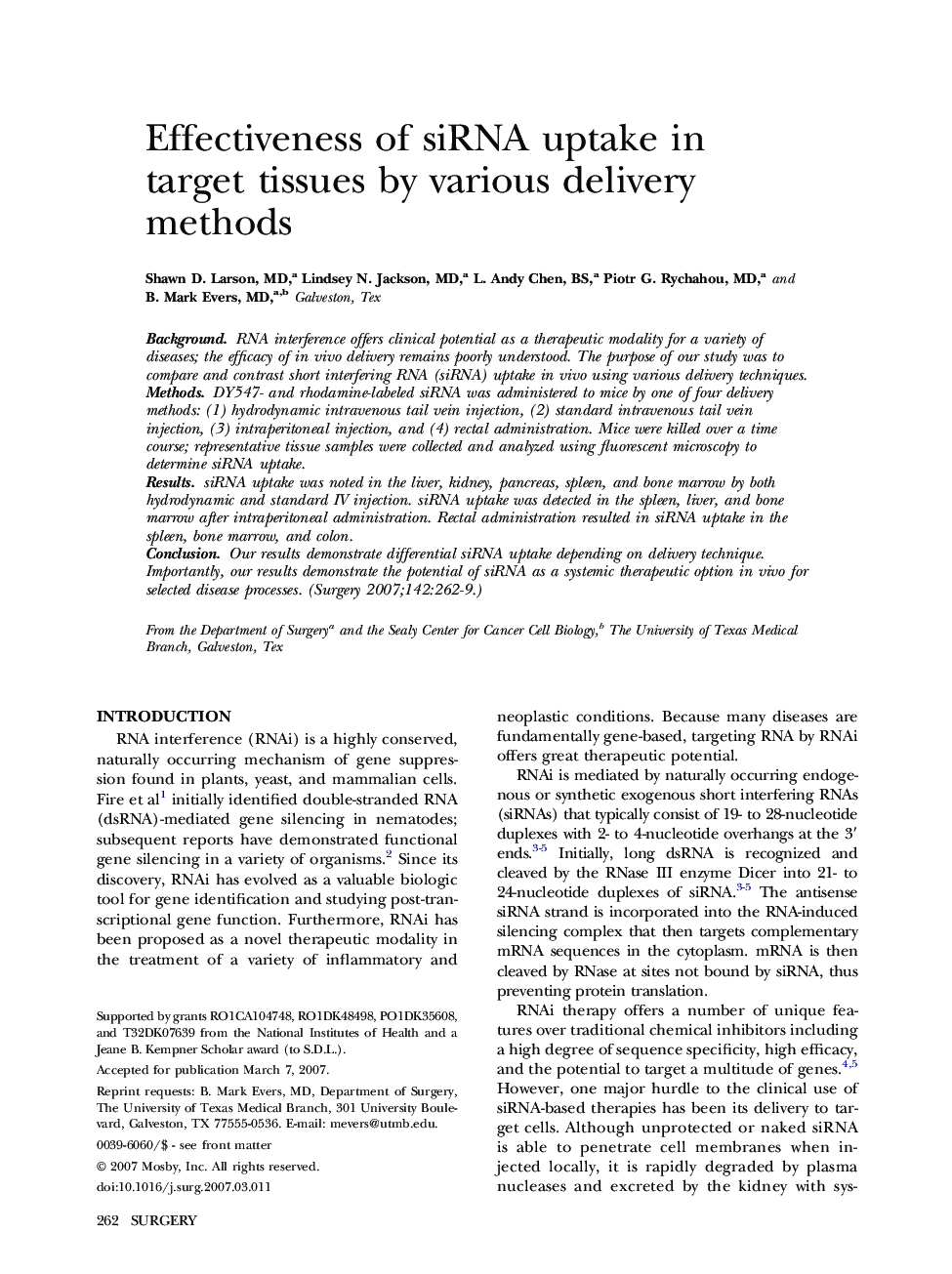| Article ID | Journal | Published Year | Pages | File Type |
|---|---|---|---|---|
| 4310339 | Surgery | 2007 | 8 Pages |
BackgroundRNA interference offers clinical potential as a therapeutic modality for a variety of diseases; the efficacy of in vivo delivery remains poorly understood. The purpose of our study was to compare and contrast short interfering RNA (siRNA) uptake in vivo using various delivery techniques.MethodsDY547- and rhodamine-labeled siRNA was administered to mice by one of four delivery methods: (1) hydrodynamic intravenous tail vein injection, (2) standard intravenous tail vein injection, (3) intraperitoneal injection, and (4) rectal administration. Mice were killed over a time course; representative tissue samples were collected and analyzed using fluorescent microscopy to determine siRNA uptake.ResultssiRNA uptake was noted in the liver, kidney, pancreas, spleen, and bone marrow by both hydrodynamic and standard IV injection. siRNA uptake was detected in the spleen, liver, and bone marrow after intraperitoneal administration. Rectal administration resulted in siRNA uptake in the spleen, bone marrow, and colon.ConclusionOur results demonstrate differential siRNA uptake depending on delivery technique. Importantly, our results demonstrate the potential of siRNA as a systemic therapeutic option in vivo for selected disease processes.
